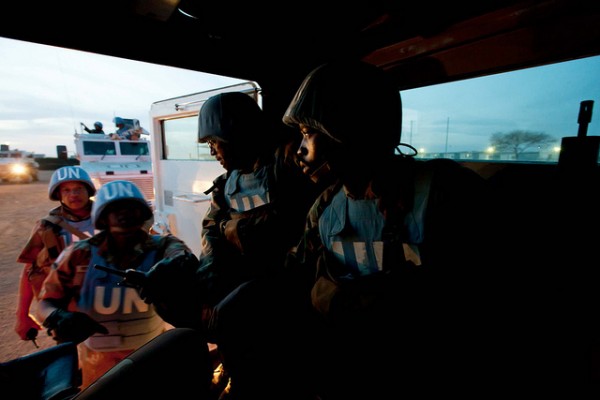
Photo by Albert González Farran – UNAMID
The Secretary General’s latest quarterly report on the Africa Union-United Nations Hybrid Operation in Darfur (UNAMID) makes for grim reading. Citing frequent military clashes between the Sudanese government and armed rebel forces, the report states that increased violence in the region has displaced more than 300,000 people since the beginning of the year, more than were displaced in the two previous years combined. The United Nations High Commissioner for Refugees (UNHCR) estimates that 2.3 million people remain displaced in the region, with some camps, such as Zam Zam in North Darfur, housing over 100,000 people.
These figures are especially depressing given that last year officials at the United States Agency for International Development (USAID) and the U.N. expressed hope that camp residents would feel safe enough to return to their ancestral villages. Pointing to the voluntary return of over 100,000 internally displaced persons (IDPs) and refugees, officials from both organizations were optimistic that the initial departures were the beginning of a larger trend.
After years of diplomacy, the presence of the U.N.’s largest peacekeeping force, involvement of celebrities such as George Clooney and Mia Farrow in high-profile advocacy campaigns, and billions of dollars in military and humanitarian aid, Darfur is no longer front-page news. Violence in Syria, Mali and Nigeria, to name a few of the more recent conflicts to grab international headlines, stretch the already short attention spans of media outlets (and their audiences) and have likely also contributed to donor fatigue. Valerie Amos, the U.N.’s top humanitarian official, conceded as much, stating that one of the major problems in assisting IDPs and refugees in Darfur was making the case to donor nations about the importance of continued funding.
While the need to support those displaced by the conflict is evident in the U.N.’s report, it is difficult to envision from where additional resources will come – and whether the allocation of additional resources would make much of difference on the ground. UNAMID has received billions of dollars since its creation in 2007; however, its combined force of over 20,000 troops and police have been unable to keep civilians safe, with rape and other forms of violence occurring daily in around the IDP and refugee camps scattered throughout Darfur. Additionally, major multilateral funding agencies have seen their budgets trimmed in recent years. For example, UNHCR’s budget for Sudan has been reduced from 232.5 million in 2011 to 133.9 million in 2012, with the appeal for 2013 estimated at 116.7 million.
Further, the U.N.’s recent call for over five billion dollars in humanitarian aid to assist individuals affected by the complex humanitarian emergency in Syria will likely crowd out any supplemental funding for Darfur. And there seems to be no high-level political engagement on the issue, as there was in 2004 when then Secretary of State Colin Powell acknowledged to the Senate Foreign Relations Committee that genocide was being perpetrated in the region.
As the peacemakers soldier on and aid agencies continue to provide much needed support to some of those displaced by the conflict, the search for a lasting and durable peace continues unremarkably. The most recent effort, known as the Doha Document for Peace in Darfur, has been in place since 2011 but has had little effect on the ground, with only the Sudanese government and two of the numerous rebel factions endorsing it. Efforts by the Qatari government to marshal an additional 7 billion dollars for economic development and improved governance in Darfur seem unlikely to garner much interest in the West. There is little appetite to cooperate with the Sudanese government, especially its President, Omar al-Bashir, who has been indicted at the International Criminal Court for crimes against humanity. In any event, despite the attention he is calling to the issue, it is doubtful that Mr. Bashir is sincere in his attempts to aid Darfur – his willingness to accept aid more than likely stems from his country’s need to make up for lost oil revenue after South Sudan’s succession in 2011. An opposition member in Sudan’s government implied as much recently in The Economist, stating Khartoum has little interest in making Darfur into a functioning part of Sudan.
Although positive moves by the Sudanese government to resolve the conflict might end the American sanctions imposed on Sudan nearly ten years ago, it is hard to see the situation on the ground changing dramatically in the near future. The best hope for Darfur might be 2015, the year President Bashir has said he will step down from power.